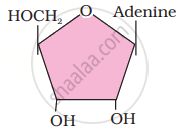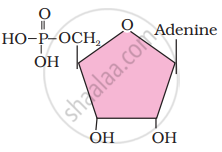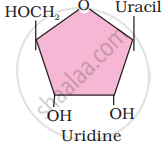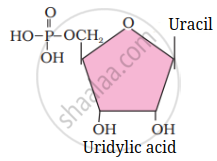Advertisements
Advertisements
Question
What is the difference between a nucleotide and nucleoside? Give two examples of each with their structure.
Solution
Living organisms have a number of carbon compounds in which heterocyclic rings can be found. Some of these are nitrogen bases-adenine, guanine, cytosine, uracil and thymine. When found attached to a sugar, they are called nucleosides. If a phosphate group is also found esterified to the sugar they are called nucleotides. Adenosine, guanosine, thymidine, uridine and cytidine are nucleosides. Adenylic acid, thymidylic acid, guanylic acid, uridylic acid and cacodylic acid are nucleotides.
 Adenosine |
 Adenylic acid |
 Nucleosides |
 Nucleotide |
APPEARS IN
RELATED QUESTIONS
Can you attempt building models of biomolecules using commercially available atomic models (Ball and Stick models).
Attempt titrating an amino acid against a weak base and discover the number of dissociating ( ionizable ) functional groups in the amino acid.
The acid insoluble fraction does not contain
Identify the incorrect statement :
Triglyceride consists of ______.
It is said that elemental composition of living organisms and that of inanimate objects (like earth’s crust) are similar in the sense that all the major elements are present in both. Then what would be the difference between these two groups? Choose a correct answer from among the following:
Many elements are found in living organisms either free or in the form of compounds. Which of the following is not found in living organisms?
An aminoacid under certain conditions have both positive and negative charges simultaneously in the same molecule. Such a form of aminoacid is called ______.
Write the name of anyone aminoacid, sugar, nucleotide and fatty acid.
Glycine and Alanine are different with respect to one substituent on the α-carbon. What are the other common substituent groups?
